Top 10
A Shrine to Romulus
By JASON URBANUS
Friday, December 04, 2020
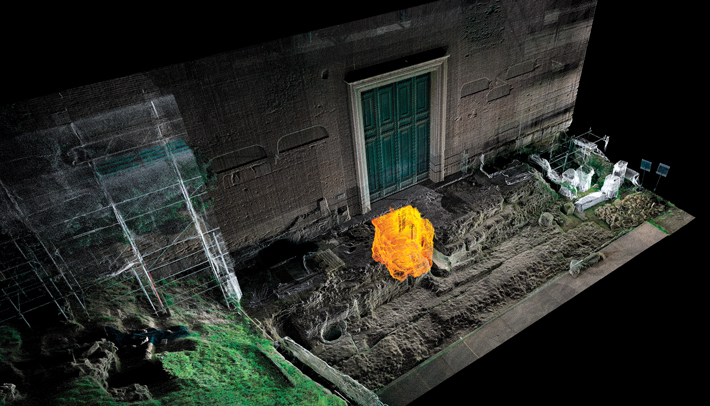
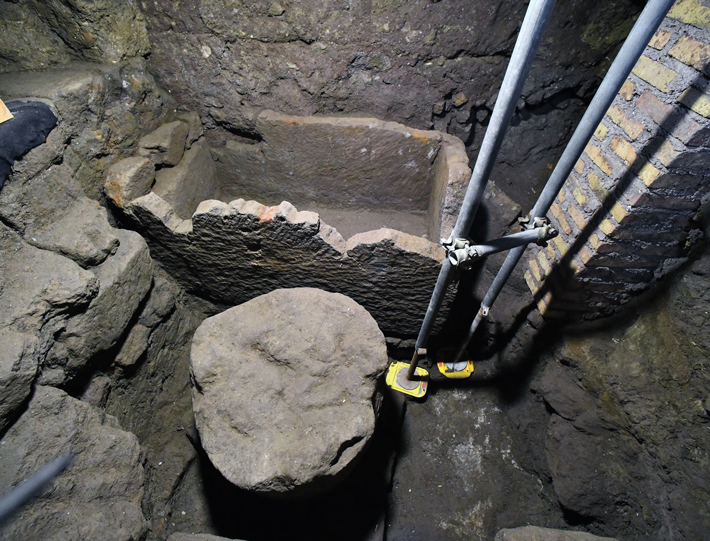 A shrine believed to have once been associated with Romulus, the mythical founder of Rome, has reemerged in an ancient and sacred part of the Roman Forum. The small monument was first discovered by archaeologist Giacomo Boni in 1899, but was subsequently reburied and forgotten for more than a century. During renovation work on the stairs of the Curia Julia, the ancient Roman Senate house, workers rediscovered the sixth-century B.C. hypogeum, or subterranean tomb, which contains a stone sarcophagus and a small round altar.
A shrine believed to have once been associated with Romulus, the mythical founder of Rome, has reemerged in an ancient and sacred part of the Roman Forum. The small monument was first discovered by archaeologist Giacomo Boni in 1899, but was subsequently reburied and forgotten for more than a century. During renovation work on the stairs of the Curia Julia, the ancient Roman Senate house, workers rediscovered the sixth-century B.C. hypogeum, or subterranean tomb, which contains a stone sarcophagus and a small round altar.
According to legend, Romulus and his brother, Remus, were abandoned at birth and then rescued and nurtured by a she-wolf. Tradition holds that Romulus went on to found the city of Rome in 753 B.C. The recent archaeological rediscovery was made in an area of the Forum where the fabled forefather’s tomb was once located, according to some Roman writers. It is also near a very ancient and mysterious rectangle of black paving stones, known as the Lapis Niger, that Romans believed marked the spot where Romulus was murdered by members of the Senate.
Scholars still debate whether Romulus actually existed, and, in any case, archaeologists do not believe the shrine ever held his body. Instead, suggests Alfonsina Russo, director of the Archaeological Park of the Colosseum, it was created as a symbolic monument where Romans could worship their city’s legendary founder and celebrate Rome’s origins.
Oldest Chinese Artwork
By JARRETT A. LOBELL
Friday, December 04, 2020
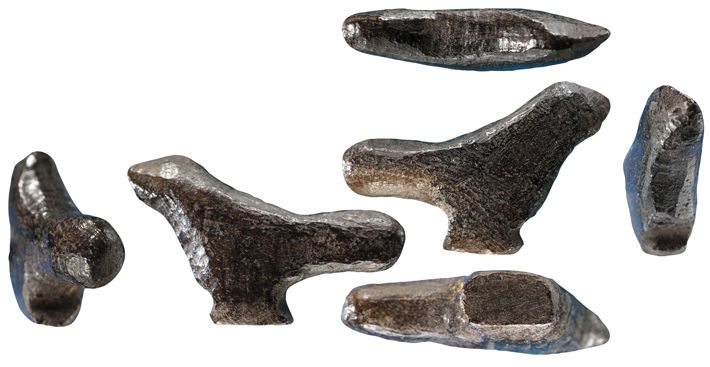 A tiny 13,500-year-old sculpture crafted from burned bone discovered at the open-air Lingjing site can now lay claim to being the earliest three-dimensional object of art found in East Asia. But what makes something a work of art or someone an artist? “This depends on the concept of art we embrace,” says archaeologist Francesco d’Errico of the University of Bordeaux. “If a carved object can be perceived as beautiful or recognized as the product of high-quality craftsmanship, then the person who produced the figurine should be seen as an accomplished artist.” Measuring only half an inch high, three-quarters of an inch long, and just two-tenths of an inch thick, the bird, a member of the order Passeriformes, or songbirds, was made using six different carving techniques. “We were surprised by how the artist chose the right technique to carve each part and the way in which he or she combined them to achieve their desired goal,” says d’Errico. “This clearly shows repeated observation and long-term apprenticeship with a senior craftsperson.” The artist’s attention to detail was so fine, adds d’Errico, that after finding that the bird was not standing properly, he or she very slightly planed the pedestal to ensure the avian would remain upright.
A tiny 13,500-year-old sculpture crafted from burned bone discovered at the open-air Lingjing site can now lay claim to being the earliest three-dimensional object of art found in East Asia. But what makes something a work of art or someone an artist? “This depends on the concept of art we embrace,” says archaeologist Francesco d’Errico of the University of Bordeaux. “If a carved object can be perceived as beautiful or recognized as the product of high-quality craftsmanship, then the person who produced the figurine should be seen as an accomplished artist.” Measuring only half an inch high, three-quarters of an inch long, and just two-tenths of an inch thick, the bird, a member of the order Passeriformes, or songbirds, was made using six different carving techniques. “We were surprised by how the artist chose the right technique to carve each part and the way in which he or she combined them to achieve their desired goal,” says d’Errico. “This clearly shows repeated observation and long-term apprenticeship with a senior craftsperson.” The artist’s attention to detail was so fine, adds d’Errico, that after finding that the bird was not standing properly, he or she very slightly planed the pedestal to ensure the avian would remain upright.
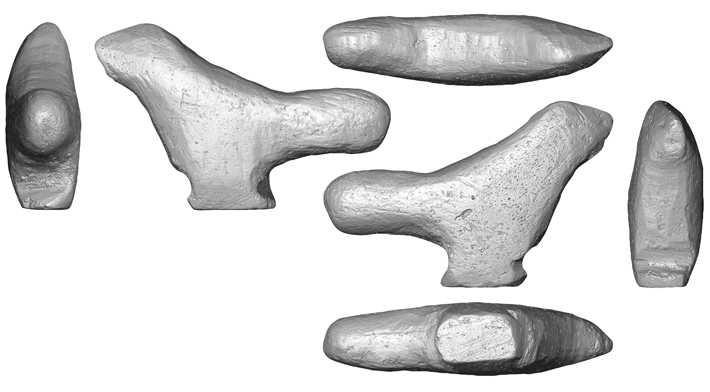
Oldest Maya Temple
By ERIC A. POWELL
Friday, December 04, 2020
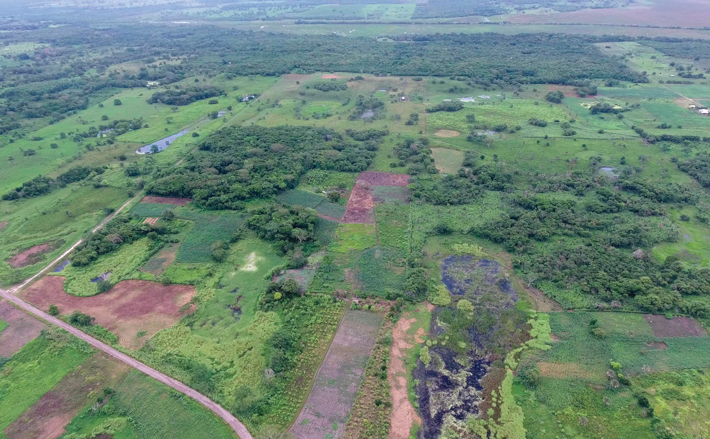 The oldest and largest ceremonial structure in the Maya world has been hiding in plain sight on a Mexican cattle ranch near the Guatemala border. “It just looks like part of the natural landscape,” says University of Arizona archaeologist Takeshi Inomata. He and his team were studying low-resolution lidar images of the region collected by the Mexican government when they were astonished to come across what seemed to be a huge earthen platform. A subsequent high-resolution lidar survey of the site showed that the platform stretches almost a mile long and rises as high as 50 feet. Radiocarbon dating suggests that Maya people constructed the ritual space between 1000 and 800 B.C.
The oldest and largest ceremonial structure in the Maya world has been hiding in plain sight on a Mexican cattle ranch near the Guatemala border. “It just looks like part of the natural landscape,” says University of Arizona archaeologist Takeshi Inomata. He and his team were studying low-resolution lidar images of the region collected by the Mexican government when they were astonished to come across what seemed to be a huge earthen platform. A subsequent high-resolution lidar survey of the site showed that the platform stretches almost a mile long and rises as high as 50 feet. Radiocarbon dating suggests that Maya people constructed the ritual space between 1000 and 800 B.C.
Known as Aguada Fenix, or “Phoenix Reservoir,” the structure resembles a platform discovered in the 1960s at the even older Olmec city of San Lorenzo, some 300 miles to the west. Evidence unearthed at San Lorenzo, such as colossal stone heads memorializing its rulers, suggests that the Olmec were likely directed to build the platform by powerful leaders. But signs of such social inequality are absent at Aguada Fenix, where the only piece of sculpture thus far unearthed is a two-foot-tall limestone sculpture of a javelina nicknamed “Choco” by the excavators. “People weren’t coerced into building this platform,” says Inomata. “They seem to have come together and built it communally, without strong central leadership.”
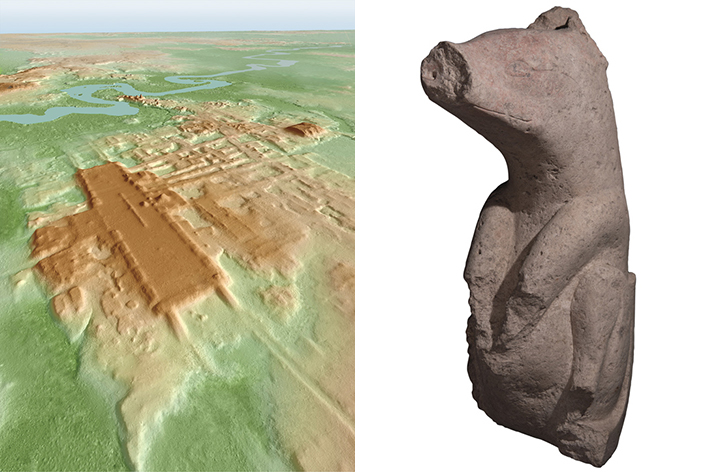
Enduring Rites of the Mound Builders
By ERIC A. POWELL
Friday, December 04, 2020
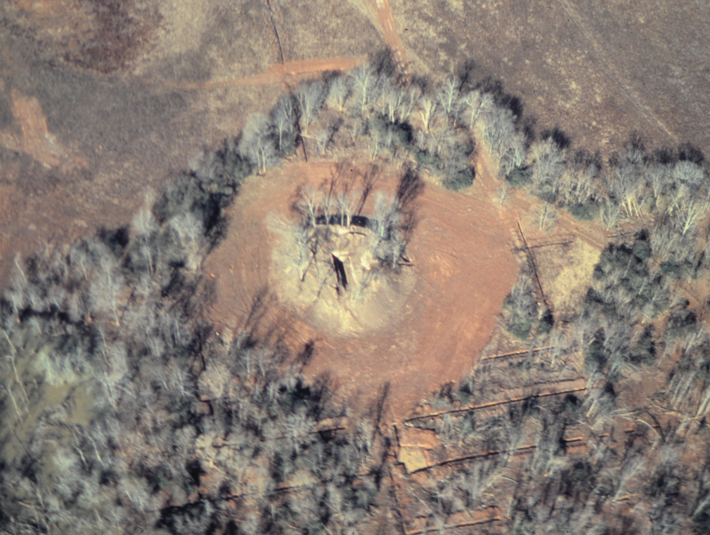
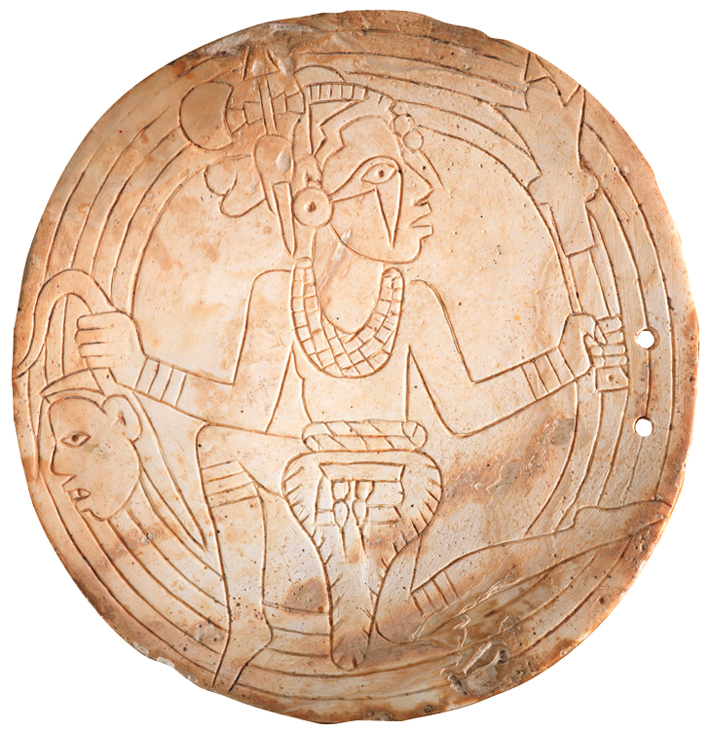 The site of a three-story-high earthen structure known as Dyar Mound now lies beneath central Georgia’s Lake Oconee, a reservoir created by a dam built in the 1970s. Before the dam’s construction, archaeologists excavated the mound, which was originally built in the fourteenth century A.D. by the ancestors of today’s Muscogee Creek people. Based on artifacts recovered from the site, they determined that Dyar Mound had been abandoned shortly after a 1539–1543 expedition led by Spanish explorer Hernando de Soto traversed the southeastern United States. De Soto and his retinue brought diseases that caused a population collapse in the region. This collapse has long been thought to have precipitated the sudden end of the Mississippian tradition, a widespread belief system practiced by the ancestral Muscogee peoples, among others.
The site of a three-story-high earthen structure known as Dyar Mound now lies beneath central Georgia’s Lake Oconee, a reservoir created by a dam built in the 1970s. Before the dam’s construction, archaeologists excavated the mound, which was originally built in the fourteenth century A.D. by the ancestors of today’s Muscogee Creek people. Based on artifacts recovered from the site, they determined that Dyar Mound had been abandoned shortly after a 1539–1543 expedition led by Spanish explorer Hernando de Soto traversed the southeastern United States. De Soto and his retinue brought diseases that caused a population collapse in the region. This collapse has long been thought to have precipitated the sudden end of the Mississippian tradition, a widespread belief system practiced by the ancestral Muscogee peoples, among others.
A team led by Washington University in St. Louis archaeologist Jacob Holland-Lulewicz has now redated charcoal unearthed at Dyar Mound and used statistical modeling to determine that the site was not in fact abandoned after the de Soto expedition, but that people carried out Mississippian rites atop the mound for nearly 150 years more. “The ancestors of the Muscogee were resilient, and their practices endured for generations,” says Holland-Lulewicz, who notes that advances in radiocarbon dating methods will likely continue to help revise scholarly narratives of early contact between Europeans and Indigenous peoples.
First English Playhouse
By DANIEL WEISS
Friday, December 04, 2020
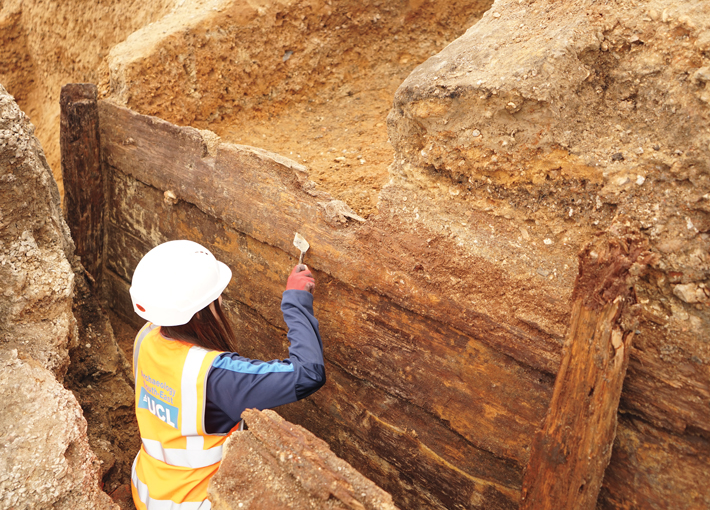 Archaeologists have uncovered what they believe are the remains of the Red Lion, the earliest purpose-built playhouse in England, which dates to the 1560s. Prior to this, playhouses were temporary creations, generally set up in the yards of inns or within great houses. The Red Lion was built under the direction of a grocer named John Brayne and until its discovery was known primarily from a pair of lawsuits he filed alleging shoddy workmanship by the carpenters who helped construct it. The later lawsuit, filed in 1569, mentions “a farme house called and knowen by the name of the Sygne of the Redd Lyon” that has seating and a stage measuring 40 feet north to south and 30 feet east to west.
Archaeologists have uncovered what they believe are the remains of the Red Lion, the earliest purpose-built playhouse in England, which dates to the 1560s. Prior to this, playhouses were temporary creations, generally set up in the yards of inns or within great houses. The Red Lion was built under the direction of a grocer named John Brayne and until its discovery was known primarily from a pair of lawsuits he filed alleging shoddy workmanship by the carpenters who helped construct it. The later lawsuit, filed in 1569, mentions “a farme house called and knowen by the name of the Sygne of the Redd Lyon” that has seating and a stage measuring 40 feet north to south and 30 feet east to west.
Guided in part by land deeds that placed the Red Lion on the border of Whitechapel and Stepney Parishes in East London, a team from University College London’s Archaeology South-East unearthed a timber structure closely matching the dimensions noted in the lawsuit. The team also discovered a number of postholes, which they have dated to the mid-sixteenth century, surrounding the stage. The posts may have supported scaffolding or galleried seating. “Some had assumed that the Red Lion would be round or octagonal,” says lead archaeologist Stephen White. “But it actually looks very reminiscent of certain European theaters that were operating in the sixteenth century where you have these types of enclosed rectangular spaces.”
The Red Lion doesn’t appear to have enjoyed a very lengthy career as a playhouse, but it does seem to have served as a prototype for The Theatre in Shoreditch. Larger than the Red Lion, The Theatre was built by Brayne in 1576 in partnership with his brother-in-law, the actor and theatrical impresario James Burbage, and premiered a number of William Shakespeare’s early works. Burbage’s son Richard was a close friend of Shakespeare and played the lead role in many of his plays.
Advertisement
Advertisement
IN THIS ISSUE
Advertisement

Recent Issues
-
 May/June 2024
May/June 2024
-
 March/April 2024
March/April 2024
-
 January/February 2024
January/February 2024
-
 November/December 2023
November/December 2023
-
 September/October 2023
September/October 2023
-
 July/August 2023
July/August 2023
-
 May/June 2023
May/June 2023
-
 March/April 2023
March/April 2023
-
 January/February 2023
January/February 2023
-
 November/December 2022
November/December 2022
-
 September/October 2022
September/October 2022
-
 July/August 2022
July/August 2022
-
 May/June 2022
May/June 2022
-
 March/April 2022
March/April 2022
-
 January/February 2022
January/February 2022
-
 November/December 2021
November/December 2021
-
 September/October 2021
September/October 2021
-
 July/August 2021
July/August 2021
-
 May/June 2021
May/June 2021
-
 March/April 2021
March/April 2021
-
 January/February 2021
January/February 2021
-
 November/December 2020
November/December 2020
-
 September/October 2020
September/October 2020
-
 July/August 2020
July/August 2020
-
 May/June 2020
May/June 2020
-
 March/April 2020
March/April 2020
-
 January/February 2020
January/February 2020
-
 November/December 2019
November/December 2019
-
 September/October 2019
September/October 2019
-
 July/August 2019
July/August 2019
-
 May/June 2019
May/June 2019
-
 March/April 2019
March/April 2019
-
 January/February 2019
January/February 2019
-
 November/December 2018
November/December 2018
-
 September/October 2018
September/October 2018
-
 July/August 2018
July/August 2018
-
 May/June 2018
May/June 2018
-
 March/April 2018
March/April 2018
-
 January/February 2018
January/February 2018
-
 November/December 2017
November/December 2017
-
 September/October 2017
September/October 2017
-
 July/August 2017
July/August 2017
-
 May/June 2017
May/June 2017
-
 March/April 2017
March/April 2017
-
 January/February 2017
January/February 2017
-
 November/December 2016
November/December 2016
-
 September/October 2016
September/October 2016
-
 July/August 2016
July/August 2016
-
 May/June 2016
May/June 2016
-
 March/April 2016
March/April 2016
-
 January/February 2016
January/February 2016
-
 November/December 2015
November/December 2015
-
 September/October 2015
September/October 2015
-
 July/August 2015
July/August 2015
-
 May/June 2015
May/June 2015
-
 March/April 2015
March/April 2015
-
 January/February 2015
January/February 2015
-
 November/December 2014
November/December 2014
-
 September/October 2014
September/October 2014
-
 July/August 2014
July/August 2014
-
 May/June 2014
May/June 2014
-
 March/April 2014
March/April 2014
-
 January/February 2014
January/February 2014
-
 November/December 2013
November/December 2013
-
 September/October 2013
September/October 2013
-
 July/August 2013
July/August 2013
-
 May/June 2013
May/June 2013
-
 March/April 2013
March/April 2013
-
 January/February 2013
January/February 2013
-
 November/December 2012
November/December 2012
-
 September/October 2012
September/October 2012
-
 July/August 2012
July/August 2012
-
 May/June 2012
May/June 2012
-
 March/April 2012
March/April 2012
-
 January/February 2012
January/February 2012
-
 November/December 2011
November/December 2011
-
 September/October 2011
September/October 2011
-
 July/August 2011
July/August 2011
-
 May/June 2011
May/June 2011
-
 March/April 2011
March/April 2011
-
 January/February 2011
January/February 2011
Advertisement






